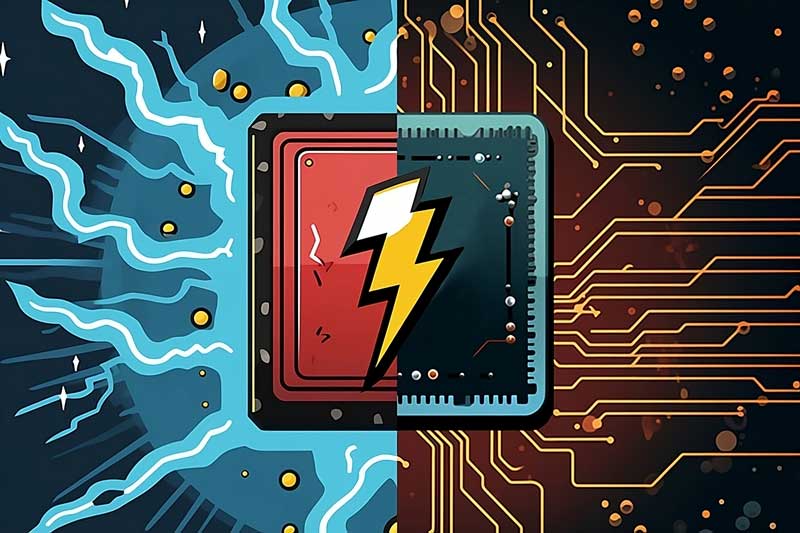The history has tried to define human beings in a lot of different ways, but nothing does justice to us like our ability to grow on a consistent basis. We say this because the stated …
The history has tried to define human beings in a lot of different ways, but nothing does justice to us like our ability to grow on a consistent basis. We say this because the stated ability has already fetched the world some huge milestones, with technology appearing as a rather unique member of the group. The reason why technology’s credentials are so anomalous is purposed around its skill-set, which was unprecedented enough to realize all the possibilities for us that we couldn’t have imagined otherwise. Nevertheless, a closer look should be able to reveal how the whole runner was also very much inspired by the way we applied those skills across a real world environment. The latter component was, in fact, what gave the creation a spectrum-wide presence and made it the ultimate centerpiece of every horizon. Now, having such a powerful tool run the show did expand our experience in many unique directions, but even after reaching so far ahead, this prodigious concept called technology will somehow keep on delivering the right goods. The same has grown to become a lot more evident in recent times, and assuming one new discovery ends up with the desired impact, it will only propel that trend towards greater heights over the near future and beyond.
The researching team at Massachusetts Institute of Technology has successfully developed a technology, which is meant to leverage the potential of photonics to accelerate modern computing by demonstrating its capabilities in machine learning. In order to understand this new development, though, we first have to gain an idea about photonic computing and what all it can do. You see, photonic computing is currently believed to be a potential remedy for the growing computational demands of machine-learning models. This is because the concept, rather than using transistors and wires, applies these microscopic light particles called photons to perform computation operations in the analog domain. Basically, photons-created laser light produces small bundles of energy, energy which can notably travel at a lightning fast rate. Next up, you install photon computing cores to programmable accelerators like a network interface card (NIC, and its augmented counterpart, SmartNICs). By doing so, you can make it possible to turbocharge a standard computer. However, as ingenious as it sounds, implementing photonic computing devices remains a challenge due to their passive nature. Such a factor means they lack the very memory or instructions to control dataflows. Fortunately, MIT researchers’ latest brainchild, named Lightning, solves that problem big time. It does so by helping deep neural networks to complete inference tasks like image recognition and language generation in chatbots such as ChatGPT. Considering deep neural are nothing but machine-learning models that imitate how brains process information, the whole system is able to clock unprecedented speed, thus becoming the first photonic computing system to serve real-time machine-learning inference requests.
“Photonic computing has shown significant advantages in accelerating bulky linear computation tasks like matrix multiplication, while it needs electronics to take care of the rest: memory access, nonlinear computations, and conditional logics. This creates a significant amount of data to be exchanged between photonics and electronics to complete real-world computing tasks, like a machine learning inference request,” said Zhizhen Zhong, a postdoc in the group of MIT Associate Professor Manya Ghobadi (senior author of the paper explaining the study) at the MIT Computer Science and Artificial Intelligence Laboratory (CSAIL).
Another limitation with the previous efforts in this area talked to electronic computing schemes’ independent operation and their tendency to speak different languages. Under the current technology’s tutelage, though, the setup can track the required computation operations on the datapath using a reconfigurable count-action abstraction, which connects photonics to the electronic components of a computer. Such a programming abstraction ensures a unified language between the two. To put it simply, all the information electrons have to offer is translated into light in the form of photons, and once these photons are done assisting an inference task; they are converted back to electrons to relay the relevant information to the computer.
Hold on, the technology also has some environmental benefits to put on the table. Most of today’s machine-learning services completing inference-based tasks produce more than double the average person’s carbon dioxide. The all-new Lightning solution, however, utilizes photons that generate significantly less heat. The team even tested this particular feature by comparing their device to standard graphics processing units, data processing units, SmartNICs, and other accelerators. Going by the available details, their product proved itself to be more energy-efficient when completing inference requests.
“Our synthesis and simulation studies show that Lightning reduces machine learning inference power consumption by orders of magnitude compared to state-of-the-art accelerators,” said Mingran Yang, a graduate student in Ghobadi’s lab and a co-author of the paper.




